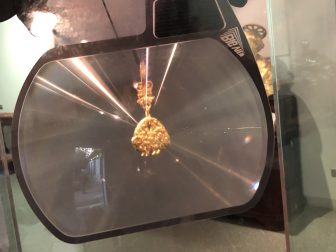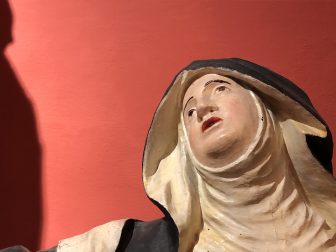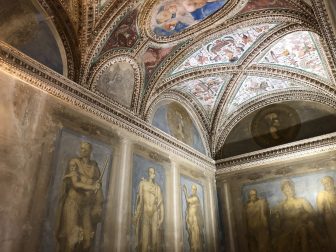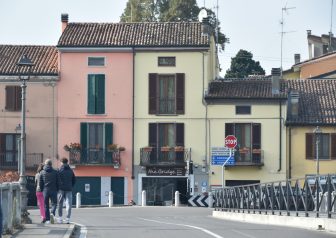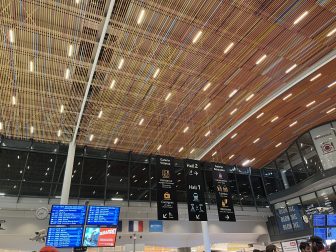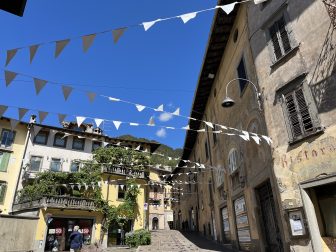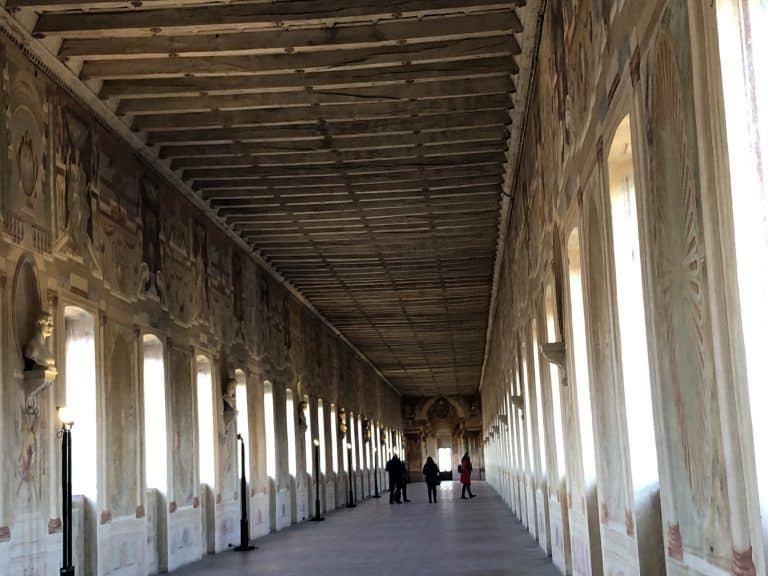
[ Nov.2018 ] In Sabbioneta, the World Heritage town in northern Italy, we visited the Museum of Sacred Art next.
This was one of the three places included in the ticket we bought at Chiesa di San Rocco.
We did not have enough information at that point but it seemed that the small, sheep-shaped pendant was the highlight of the musuem.
We could see it through the magnified glass.
I looked it up later and found that it was the pendant of the Order of the Golden Fleece, which was given to Vespasiano Gonzaga, who built this town, by Philip I of Spain.
They found this pendant in the grave of Vespasiano at the Church of Incoronata in 1988.
So what is the Order of Golden Fleece?
Apparently, it is the knighthood created by the Duke of Burgundy, Philip the Good, in 1429 and the pendant seems to be a sort of honourable medal.
According to the internet information, surprisingly, the Order still exists.
When it was created, the members were limited to the catholic believers, but later it was expanded and now, even Japanese emperors have this pendant from generation to generation.
Generally speaking, the owners of the pendants seem to be kings and emperors as well as heirs to the throne.
Apart from this, in this museum we saw some costumes of priests and expressive statues of saints and nuns and so on.
The last place we visited in Sabbioneta was the Garden Palace (Palazzo Giardino).
This was included in the other ticket, which allowed us to enter four places.
The palace itself was a relatively small white building and not noticeable, but this was connected to the long brick corridor, which was the one I had noticed as soon as we arrived in the town.
According to the leaflet here, the Garden Palace was a private palace of Vespasiano for him to spend quiet moments reading or listening to music with a small number of his guests.
There are 7 main rooms and their walls and ceilings are full of pictures with the subject of ancient myths.
On the white outer wall, there used to be a geometric pattern pretending it was made of marbles.
The long
As the name suggests, it was a gallery for exhibiting Vespsiano’s archaeological collections including the ancient statues and epigraphs, as well as antlers from hunting.
Although this looks like a corridor connected to somewhere else, it is cut off suddenly because it was intended to be a gallery from the start.
Only a few special guest of him were invited to see the collections, apparently.
Those treasures were displayed there until 1773, when the order by Austria, which was ruling this area in those days, made them move to Mantua, about 30km away from this town.
That was the end of our visit.
Sabbioneta is a small town, but there were many places worth visiting.

